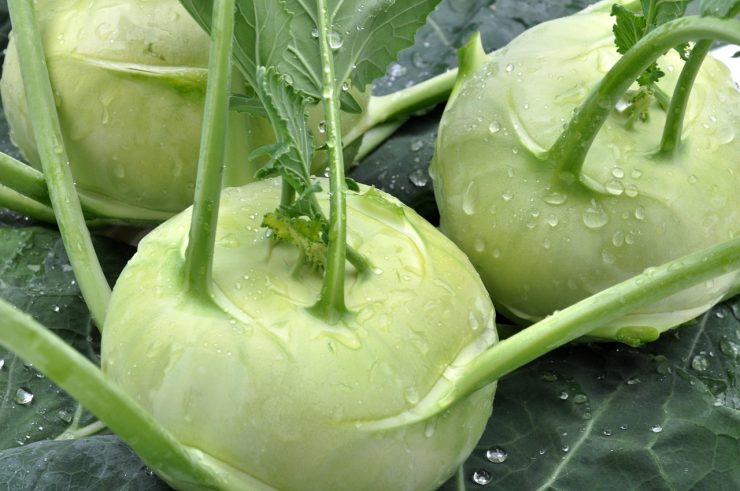That unusual-looking vegetable spotted at the farmers market or grocery store—round, with leafy stems sticking out—might just be kohlrabi. Though once less familiar to many, kohlrabi is quickly gaining recognition as one of the standout members of the cruciferous vegetable family.
Kohlrabi, pronounced coal-ROB-ee, features a bulbous base that can be green or purple. The outer layer is thick and tough, but beneath it is crisp, juicy flesh with a mild, slightly sweet flavor reminiscent of broccoli stems. It can be enjoyed raw—sliced into sticks for dipping or grated into slaw—or cooked in soups, stir-fries, and other dishes. The leafy greens are also edible, with a taste similar to collards but more delicate.
Like other cruciferous vegetables such as broccoli, kale, and Brussels sprouts, kohlrabi is rich in phytonutrients and antioxidants that offer a wide range of health benefits. It contains generous amounts of vitamins A, C, and K, B vitamins, and minerals including potassium, calcium, iron, manganese, and copper. Combined with dietary fiber and unique plant compounds, these nutrients make kohlrabi a supportive food for digestion, blood sugar regulation, heart health, and even cancer prevention.
A Natural Cancer Fighter
Cruciferous vegetables are well known for their cancer-fighting compounds, and kohlrabi is no exception. It’s a source of glucosinolates, which help detoxify the body, protect DNA from damage, and inhibit the development of cancer cells. These compounds can be particularly effective in preventing cancers of the breast, colon, lung, and cervix.
To maximize these protective compounds, it’s best to enjoy kohlrabi raw or only lightly cooked. Extended cooking breaks down enzymes like myrosinase, which are key to converting glucosinolates into their active forms.
Supports Heart Health
Regular consumption of vegetables—especially those high in antioxidants like kohlrabi—has been associated with a reduced risk of heart disease. This includes lowering inflammation, improving blood vessel function, and reducing levels of C-reactive protein (CRP), an inflammatory marker linked to cardiovascular risk.
In addition, kohlrabi’s high vitamin C content—surpassing even oranges—provides further cardiovascular protection. Vitamin C plays a role in maintaining healthy arteries, supporting immune function, and reducing oxidative stress, all of which benefit heart health.
Helps Regulate Blood Pressure
Kohlrabi is a good source of potassium, a mineral that helps balance sodium in the body and naturally lowers blood pressure. Diets rich in potassium and antioxidants have been shown to reduce the risk of strokes and promote overall cardiovascular wellness.
Aids in Blood Sugar Balance and Weight Control
With its low carbohydrate content and high fiber levels, kohlrabi can be a helpful addition to meals for managing blood sugar levels. The fiber helps slow digestion and prevent blood sugar spikes, while also promoting fullness and reducing cravings for higher-calorie foods. It makes a great alternative to processed snack foods—crunchy, satisfying, and far more nutrient-dense.
Studies have linked higher consumption of vegetables like kohlrabi to a reduced risk of developing type 2 diabetes. Its high water content and fiber make it especially supportive for weight management and satiety.
Where and When to Find It
Kohlrabi is becoming more common and can now be found in many grocery stores, especially in spring, early summer, and fall. It comes in green and purple varieties, though both share the same white flesh inside. When selecting kohlrabi, look for firm bulbs with fresh, green leaves still attached.
The greens can be cooked much like collard or mustard greens—sautéed, steamed, or added to soups—and provide additional nutrients and fiber.
Easy Ways to Enjoy Kohlrabi
-
Raw: Peel and slice into sticks for dipping or shred for slaw.
-
Roasted: Cube and toss with olive oil and seasonings for a crispy, caramelized side.
-
Mashed: Blend with cauliflower or potatoes for a nutrient-dense mash.
-
Greens: Sauté with garlic and olive oil or add to soups.
Kohlrabi is not just a unique addition to a meal—it’s a nutritional powerhouse worth exploring.











